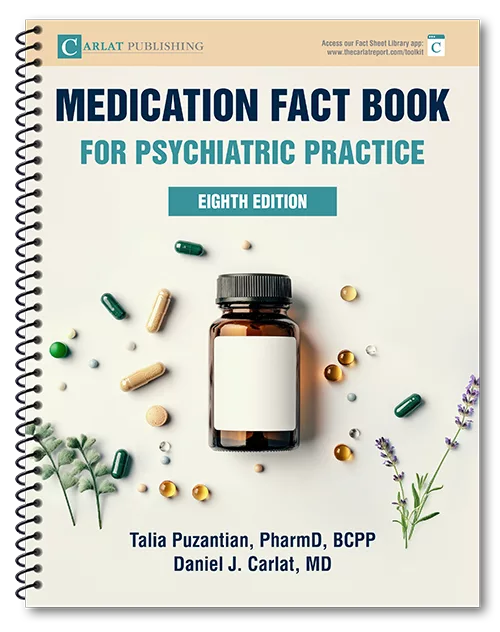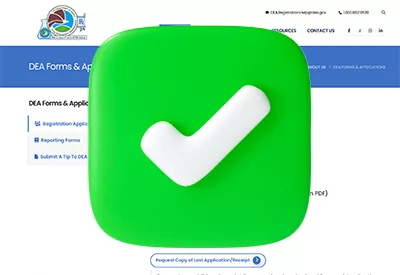Meds that require special skill to start: Antipsychotics, Cobenfy, and a research update on antidepressant metabolism in Asians.
Publication Date: 08/11/2025
Duration: 12 minutes, 19 seconds
Transcript:
KELLIE NEWSOME: You know the drill. Start low and go slow. But sometimes the usual laws don’t apply, and we’ll cover them on Part II of How to Start a Psych Med. Welcome to the Carlat Psychiatry Podcast, keeping psychiatry honest since 2003.
CHRIS AIKEN: I’m Chris Aiken, the editor in chief of the Carlat Report.
KELLIE NEWSOME: And I’m Kellie Newsome, a psychiatric NP and a dedicated reader of every issue. Last week, we reviewed the most important part of starting a psych med – educating patients about what to expect and collaborating with them to choose a medication. For most medications, titration schedules are also collaborative. There’s no right way to start them, and whether you go fast or slow depends on whether your patient wants to recover as fast as possible or avoid as many side effects as possible. But there are some meds that benefit from a little extra skill, and that is what the rest of this series will focus on. You’ll learn expert titration strategies for bupropion, antipsychotics, prazosin, lithium, lamotrigine, carbamazepine, valproate, and atomoxetine. At the end of each episode, we’ll bring you a research update from our Daily Psych feed. Today’s paper is on antidepressant metabolism in Asians. To join the feed, search for ChrisAikenMD on LinkedIn, Twitter, Facebook, or Bluesky. It’s easy to get burned while starting antipsychotics. Too much akathisia, sedation, dizziness, or a fall, and your patient may never want to take them again. So, unless it’s an urgent situation, I usually start them at the lowest possible dose, much lower than the PDR recommends. After all, most of the antipsychotic studies that inform the PDR’s dose schedules were done on an inpatient unit, where rescue benzos and supportive nurses are ready to assist if trouble arises.
CHRIS AIKEN: Most of us have probably already incorporated this pearl into their practice, but there’s still a stumbling block to look out for, and that is drug interactions. Antipsychotics are often added to meds that can double or quadruple their levels, and I’ve seen some terrible cases of akathisia and EPS result from these interactions.
KELLIE NEWSOME: The ones you need to watch for are the antipsychotics that rely on a single CYP enzyme as their primary route of metabolism. Most of the 15-second generation antipsychotics are single-enzyme meds, including Cobenfy, and their levels are raised by many common psych meds, including several SSRIs and SNRIs, antidepressants.If you don’t pay attention, you’ll end up dosing that risperidone 2-9 times higher than you expected, and that is not going to feel good for your patient.
CHRIS AIKEN: Here are the antipsychotics whose levels can shoot up with these single pathway drug interactions. I'm gonna list them by the enzyme that they are metabolized through:
CYP2D6: Risperidone and Cobenfy
CYP1A2: That one is reserved for clozapine. And the big offender is CYP3A4, including the ones that are popular in mood disorders:
Cariprazine (Vraylar)
Lumateperone (Caplyta)
Lurasidone (Latuda)
Quetiapine (Seroquel)
Ziprasidone (Geodon)
Also, through CYP3A4 is the antipsychotic for Parkinson’s, Pimavanserin (Nuplazid).
KELLIE NEWSOME: Now, let’s look at how to manage those interactions. Strong 2D6 inhibitors will raise risperidone levels 2-9 times, which means a lot of akathisia. We’re not sure how much they raise Cobenfy, but high levels of this cholinergic antipsychotic will cause a lot of gastrointestinal side effects. Here are the strong CYP2D6 inhibitors to watch out for: asenapine, bupropion, duloxetine, and several SSRIs: fluoxetine, paroxetine, and high-dose sertraline ≥ 150 mg/day. When you’re adding risperidone or Cobenfy to one of those, start the antipsychotic at ½ half the usual starting dose and aim for half the target. That’s also true when you’re starting it in a regular user of cannabis or CBD oil - cannabidiol is also a strong 2D6 inhibitor. Another option is to stop the inhibitor, but keep in mind the inhibition doesn’t stop right away – it takes about 5 half-lives for the medication to clear, and another few days for the inhibitor effects to clear, so we’re talking about a week for most meds – and longer for long-half-life meds like fluoxetine.
CHRIS AIKEN: For the CYP1A2 enzyme, that's where we worry about clozapine. And this one is easier as there is only one strong CYP1A2 inhibitor. In psychiatry, it is the SSRI fluvoxamine, or luvox used in OCD, and fluvoxamine is gonna triple your clozapine levels on average. Now, some people do use this fluvoxamine interaction strategically because blocking clozapine metabolism with fluvoxamine also improves clozapine tolerability, because it gets rid of the metabolite that is responsible for many of clozapine's side effects, that metabolite is called norclozapine. Now this has been proven in randomized controlled trials to work, in those trials, it reduced side effects and improved actually positive symptoms. So it can be a helpful strategy, but it has to be done very carefully, checking clozapine blood levels before and after you add fluvoxamine and lowering the dose down by about 70%, because remember, fluvoxamine is gonna triple the levels. So you only want to take a third of the clozapine, like from 300 to 100, before adding the fluvoxamine in, and fluvoxamine is usually added in at 50 milligrams a day. And all of that extra care is important because high levels of clozapine can cause seizures, cardiomyopathy, hypotension, and falls. It's not something you want to take lightly.
KELLIE NEWSOME: Let’s pause for a preview of the CME quiz for this episode. Earn CME for each episode through the link in the show notes.
TRUE or FALSE: Metabolic differences cause actionable problems for 1 in 4 Japanese patients who start their first antidepressant.
Next are antipsychotics metabolized by CYP 3A4. Let’s recap:
Cariprazine (Vraylar)
Lumateperone (Caplyta)
Lurasidone (Latuda)
Quetiapine (Seroquel)
Ziprasidone (Geodon)
And Pimavanserin (Nuplazid)
These are going to be bumped up about 2-fold by moderate CYP-3A4 inhibitors, and 3-9 fold by strong inhibitors. The only psych med that is a strong 3A4 inhibitor is nefazodone, but other strong 3A4 inhibitors to watch out for are antibiotics, antifungals, HIV meds, diltiazem, and verapamil. Grapefruit juice is another potent one that causes this interaction. More common are the moderate inhibitors that bump the antipsychotic levels up 2-fold. This includes every SSRI except citalopram and escitalopram, so fluoxetine, fluvoxamine, paroxetine, and sertraline at doses over 150 mg. It’s hard to remember all this, but keep the big picture in your mind so you’ll know when you’re in danger. If you’re adding an antipsychotic to an SSRI, duloxetine, or bupropion, check for drug interactions. About half of the time, there is one, and taking that extra step will spare your patient a lot of uncomfortable akathisia and overwhelming fatigue. Two other populations who need a gentler antipsychotic titration are Asians and people in first-episode psychosis. Both of these groups are more prone to side effects. People of Asian descent are more likely to have genes for slow metabolism in their CYP system, but that only partly explains their sensitivity to antipsychotics. First episode psychosis not only calls for a gentler titration, but these patients also respond to lower doses of antipsychotics than patients who have had multiple episodes. And that brings us to the study of the day, Estimating the incidence of actionable drug-gene interactions in Japanese patients with major depressive disorder by Masakazu Hatano in Frontiers in Psychiatry Spring 2025.
CHRIS AIKEN: We often hear that patients of Asian descent are more likely to be slow metabolizers at genes that affect psych meds, but how common is the problem? Using a nationwide registry dataset in Japan, these researchers found that 1 in 4 Japanese patients who were prescribed their first antidepressant had a clinically relevant genetic metabolic difference that the clinician should have dealt with; in other words, the drug gene interaction was serious enough to require a dose or medication change. The most common problem in Japan was with escitalopram and the CYP2C19 enzyme, an enzyme that is often slow in Japanese patients, and it can affect citalopram as well.
KELLIE NEWSOME: Other studies estimate that 20-40% of Asian patients have metabolic differences that can affect their response to psych meds, though the exact enzyme that is affected varies by population. Slow metabolism at CYP2D6 is common in East Asia but rare in Japan. Other studies that we’ve posted in recent years illustrate the clinical relevance. One found that desvenlafaxine – which is not metabolized by the CYP system – is better tolerated than duloxetine in Asian patients, even though both are SNRIs. Another found unusually high rates of akathisia on brexpiprazole in Japan. At the 2 mg dose, 1 in 4 patients had akathisia. Brexpiprazole is known for having low rates of akathisia, but it is metabolized by 3A4 and 2D6, and differences in those enzymes may lead to more side effects. Find more expert dosing tips on psychiatric medications in our best-selling textbook, Prescribing Psychotropics. It’s got hard to find answers to everyday questions like, “Can I give asenapine once a day? Is the brand better than the generic? And wait, carbamazepine and venlafaxine come as an XR and ER – which one should I choose? Find out why Garrett Rossi calls it “My go to Resource for Evidence Based Information that is clinically relevant” and Carly W warns, “DO NOT PURCHASE KINDLE VERSION.” Thank you, Carly - we fixed that bug.


_-The-Breakthrough-Antipsychotic-That-Could-Change-Everything.webp?t=1729528747)



